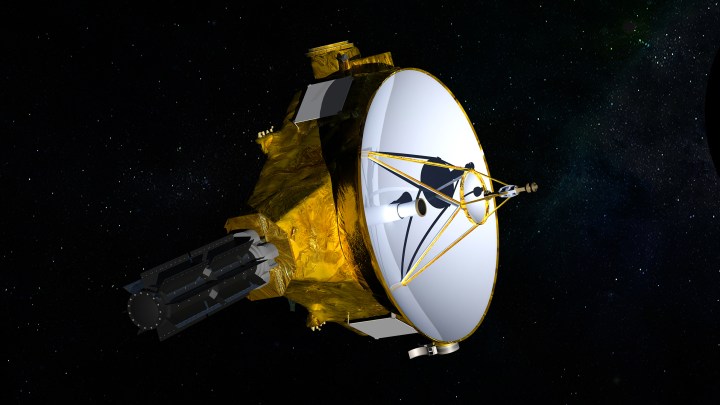
A NASA probe which was the first spacecraft to explore Pluto is continuing its journey out into the solar system, where it is now almost 5 billion miles from home.
New Horizons was launched in 2006 and traveled out to the edge of the solar system. On its way, it captured a close-up image of Pluto and visited the farthest object humanity has reached.
Now, it has passed a big milestone, reaching 50 astronomical units from the sun. An astronomical unit, or AU, is a measurement of distance that is equivalent to the average distance between the sun and the Earth. So New Horizons is now 50 times further away from the sun than the Earth is.
This massive distance means it takes longer and longer for signals from New Horizons to reach Earth, resulting in an increasing communication delay.
“It’s hard to imagine something so far away,” said Alice Bowman, the New Horizons mission operations manager at the Johns Hopkins Applied Physics Laboratory in Laurel, Maryland, in a statement. “One thing that makes this distance tangible is how long it takes for us on Earth to confirm that the spacecraft received our instructions. This went from almost instantaneous to now being on the order of 14 hours. It makes the extreme distance real.”
To celebrate this milestone, the team released this photograph taken by New Horizons, showing the starfield it looks out on and the location of the even further-away Voyager 1 craft circled in yellow. Voyager 1 is an incredible 150 AU from the sun, meaning it is too far away to be visible and has passed out of the solar system. New Horizons is heading out of the solar system too, and is expected to pass into interstellar space in the 2040s.

“That’s a hauntingly beautiful image to me,” said Alan Stern, New Horizons principal investigator from the Southwest Research Institute in Boulder, Colorado. “Looking back at the flight of New Horizons from Earth to 50 AU almost seems in some way like a dream. Flying a spacecraft across our entire solar system to explore Pluto and the Kuiper Belt had never been done before New Horizons. Most of us on the team have been a part of this mission since it was just an idea, and during that time our kids have grown up, and our parents, and we ourselves, have grown older. But most importantly, we made many scientific discoveries, inspired countless STEM careers, and even made a little history.”



